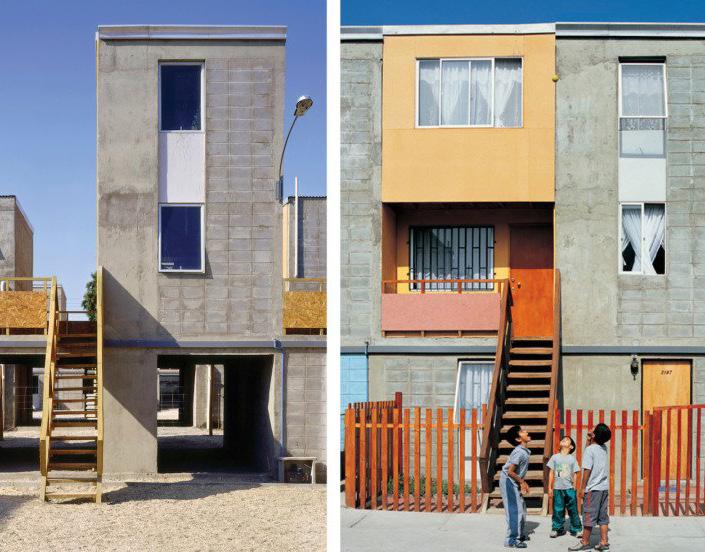
3 minute read
DEVELOPING THE DESIGN AMBITIONS
TOWARDS A BORDER SPACE DESIGN
7.1 | Affordable, incremental housing 7.2 | Complex public spaces 7.3 | Slow traffic networks Based on the three observations explained in the previous chapters, a desired border typology has been established: a slow, complex border space (see page 57) .
Advertisement
The next step is to understand what the design requirements for border space are. For this purpose, three design ambitions have been established that aim to contibrute to the development of inclusive border space. These three ambitionas are: developing affordable, incremental housing, developing robust, lively public spaces, and building slow traffic networks that are inclusively accessible and ensure the equitable access to opportunities in border space.
7.1 | Affordable, incremental housing
The first design ambition for the Como-Chiasso border area stems from the observation that the border has spatial, three-dimensional effects on border space. One of these effects is the cluttering of housing along the border, to accommodate people who want to profit from the benefits of border crossing.
The current housing solutions present along the Como-Chiasso border are worn down. Old villas and shabby apartment blocks make up the offer along the Como-Chiasso border. If the aim is to accommodate people from diverse backgrounds in border space, the first spatial requirement in border space is affordable housing. Considering the changing conditions inherent to border space, it is also important that structures in border space are flexible to adapt to changing needs.
The design question thus becomes: how to design affordable housing that is sustainable and suitable for diverse inhabitants with differing spatial needs?
Figure 65 Above Configuration study of the minimum 4 x 4 unit (see page 85). Image by author.

In search for an answer to this question, inspiration is taken from a housing concept developed by the architecture studio Elemental: incremental housing. The main idea with incremental housing is that a house can grow in quality over time.
Building robust frames that can be filled in by the inhabitants of border space in Como can create a creative, diverse but robust housing stock that is suitable to various groups in border space. How these flexible blocks should be designed is explored in the following pages.
7.2 | Complex public spaces
The second spatial design ambition is derived from the observation that border space has overlapping networks and belongs to multiple territories. The diverse users of border space do not have the opportunity to meet, however. This leads to the understanding that border space needs diverse, public spaces in which different users can come together to meet and exchange.
Designing for a dynamic condition means public spaces should be adaptive, but also robust - to ensure that their quality remains over time. The dynamics between incremental housing and public space are further tested in the coming pages of this thesis. What happens if the density inside a dwelling grows or shrinks? How can public space be organised to accommodate these changes?
7.3 | Slow traffic networks
The third spatial design ambition is inspired by the observation that border space is shaped by movements of people, products and information. Currently, the infrastructures that allow these movements to take place are organized as such, that opportunities to pause are scarce. Moving people through border space with such a speed leads to a decline in possibilities for different people in border space to see each other, let alone interact. The development of a slow traffic network could enhance the chances of running into one another in border space. Also, slow transport is much more accessible for people with a low income. Locations along the network are a suitable location for the development of spaces that could bring into contact diverse people in border space.
Figure 66 Upper left Quinta Monroy Housing project by Alejandro Aravena.
Figure 67 Lower left Apartment building in PonteChiasso, a few minutes from the border crosspoint. Image from Google Streetview.








